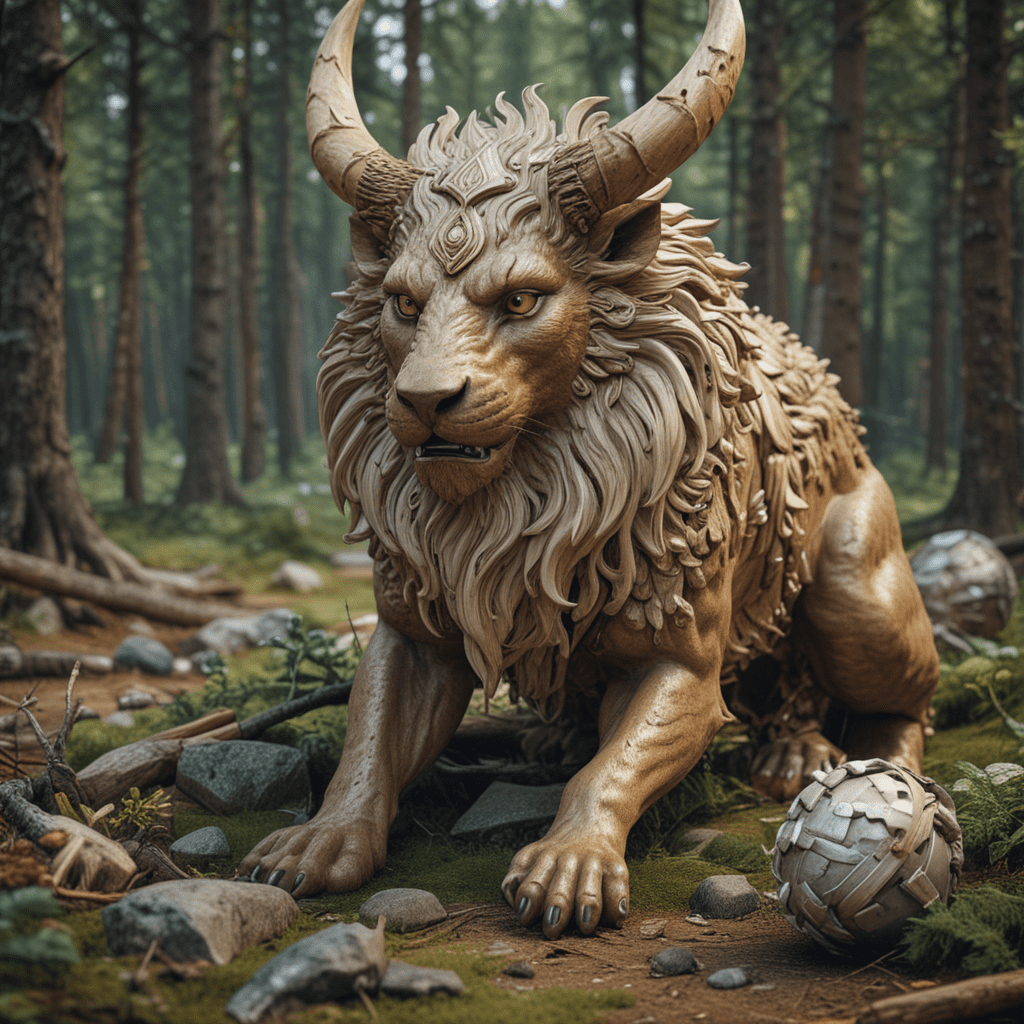The Influence of Finnish Mythology on Traditional Crafts
Nestled in the heart of northern Europe, Finland possesses a rich tapestry of myths and legends that have profoundly shaped its cultural identity. This mythological heritage has found vibrant expression in the country's traditional crafts, infusing them with symbolic motifs, mythical creatures, and techniques rooted in ancient lore.
The Rich Tapestry of Finnish Mythology
Finnish mythology is an intricate web of beliefs, stories, and rituals that have evolved over centuries. It is deeply influenced by the natural world, with forests, lakes, and animals playing pivotal roles in the narratives. Deities, spirits, and mythical creatures populate this realm, representing the forces of nature and the human condition.
Symbolism in Traditional Crafts
Traditional Finnish crafts are adorned with a wealth of symbols drawn from mythology. The bear, considered a sacred animal in ancient times, is frequently depicted in woodcarvings and textiles, representing strength and protection. The elk, a symbol of swiftness and grace, is often embroidered on clothing and tapestries.
Crafts Inspired by Mythical Creatures
Mythological creatures occupy a prominent place in Finnish traditional crafts. Wooden sculptures of forest spirits, known as "haltijas," are believed to protect homes and bring good fortune. Textiles are often woven with imagery of water sprites, called "näkki," symbolizing the mystery and allure of the aquatic realm.
6. Myth-Inspired Techniques
The influence of Finnish mythology extends beyond motifs and creatures to traditional crafting techniques. Many embroidery stitches used today originated in ancient practices believed to have spiritual significance. Similarly, woodworking techniques passed down through generations reflect the reverence for the natural world and the belief in the transformative power of craftsmanship.
7. Folk Art and Storytelling
Traditional Finnish crafts serve as a medium for storytelling. Tapestries are often woven with intricate depictions of mythological narratives, while woodcarvings narrate legends of heroes and mythical beings. These crafts not only embellish homes but also preserve cultural heritage and transmit myths across generations.
8. Preserving Cultural Heritage
Master craftsmen have played a crucial role in preserving the techniques and symbolism of traditional Finnish crafts. Their dedication to maintaining traditional methods ensures the authenticity and longevity of this art form. Additionally, efforts to revive old techniques have helped rekindle interest in these cultural treasures.
9. Contemporary Interpretations
While traditional Finnish crafts remain rooted in ancient mythology, contemporary artists and designers have embraced these motifs with a modern twist. Fashion designers incorporate mythical elements into their creations, offering innovative interpretations of ancient symbols. Similarly, artists find inspiration in mythology to create modern sculptures, paintings, and other art forms that connect with the past while embracing the present.
10. Conclusion
The influence of Finnish mythology on traditional crafts is profound and enduring. From symbolic motifs to mythical creatures and crafting techniques, this rich heritage continues to inspire and shape Finnish artisans. Preserving and celebrating these crafts not only safeguards a cultural legacy but also provides a glimpse into the captivating world of Finnish mythology. As contemporary artists find new ways to reinterpret traditional motifs, the legacy of Finnish mythology will continue to evolve, connecting the past with the present and inspiring future generations.
FAQ
Q: What are some common mythical creatures depicted in Finnish crafts?
A: Forest spirits, water sprites, and animal totems are commonly found in traditional Finnish crafts.
Q: How does mythology influence embroidery patterns?
A: Ancient embroidery stitches are believed to have spiritual significance and are often used to depict mythological symbols.
Q: What is the significance of the bear in Finnish mythology?
A: The bear is considered a sacred animal and is often represented in woodcarvings and textiles as a symbol of strength and protection.
Q: How are contemporary artists using Finnish mythology in their work?
A: Contemporary artists incorporate mythical elements into fashion, sculpture, and painting, reinterpreting traditional motifs with a modern twist.





